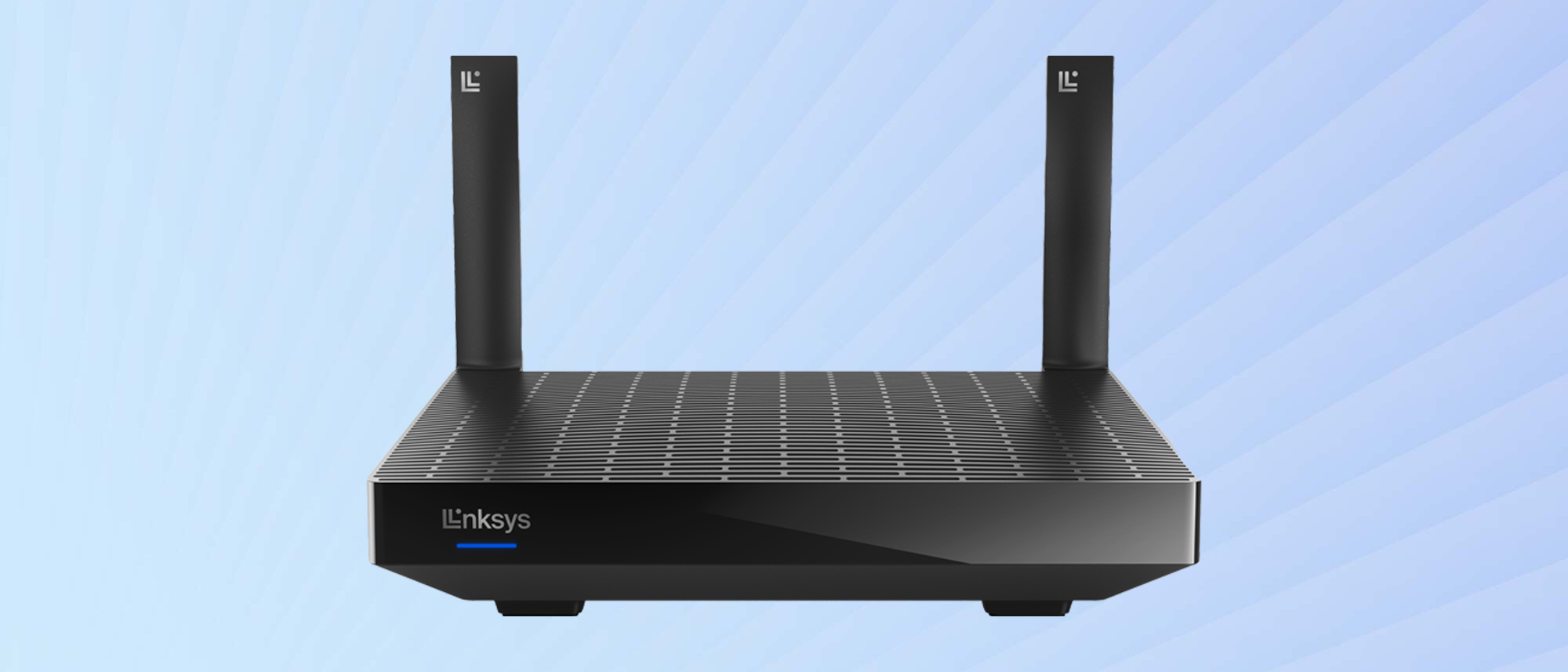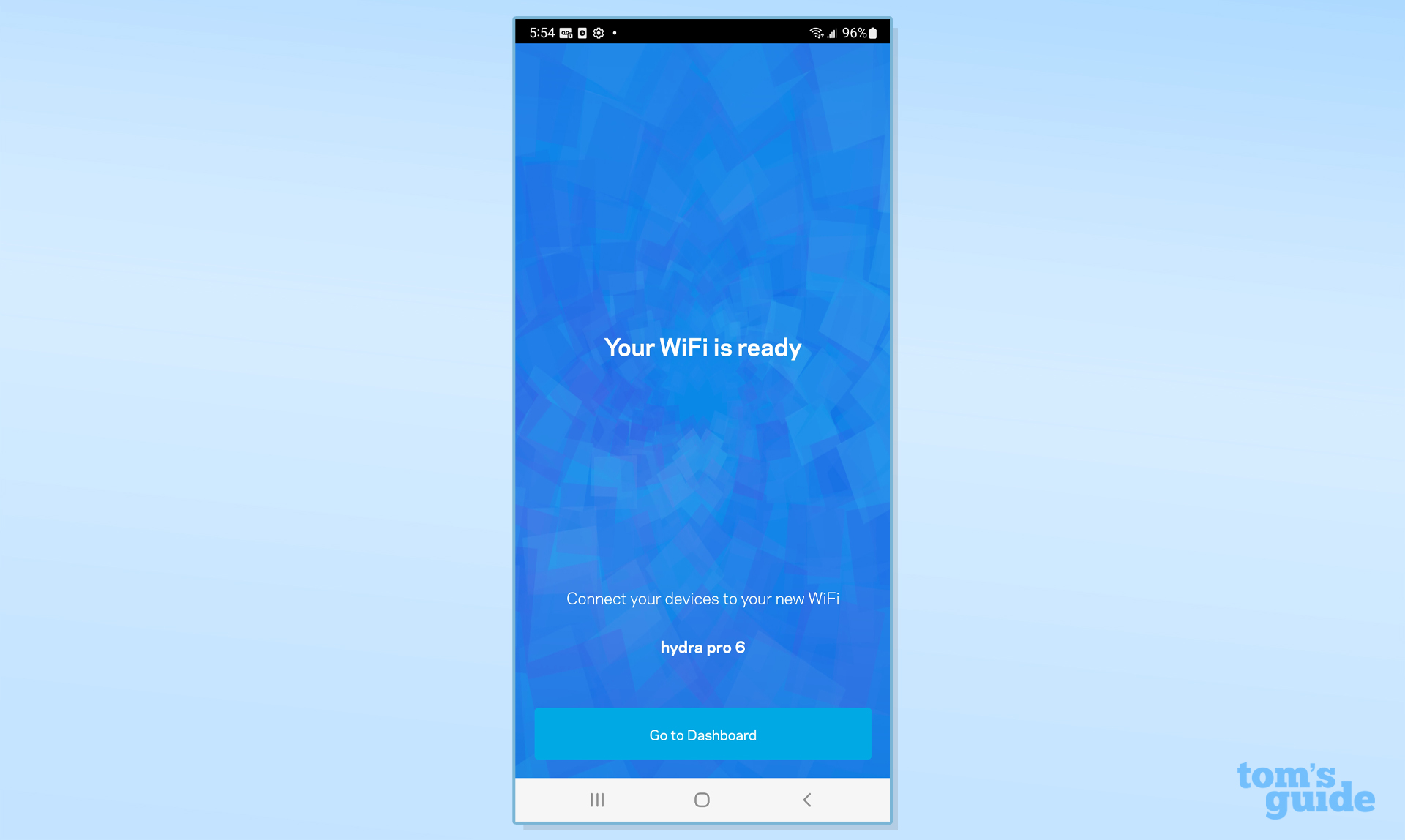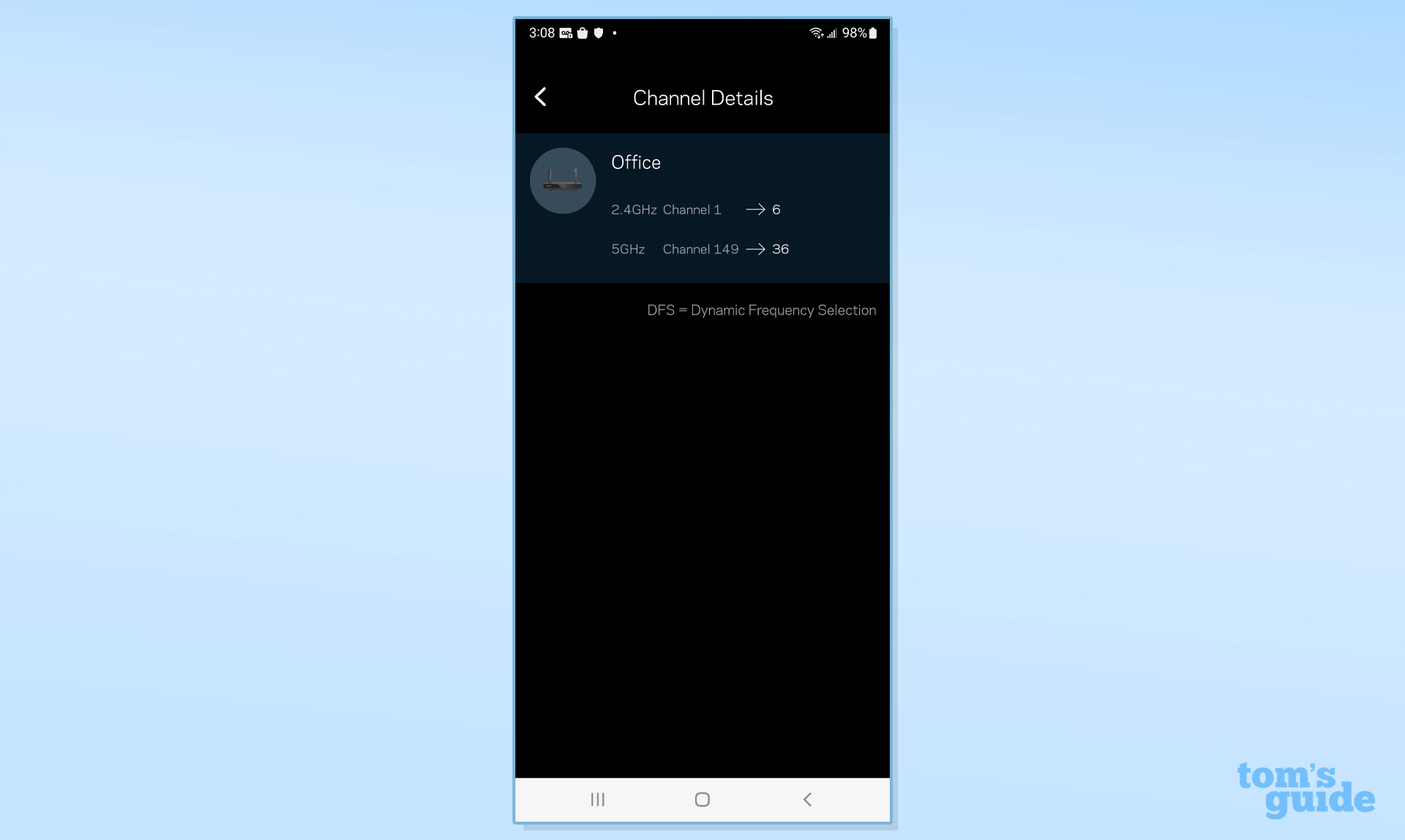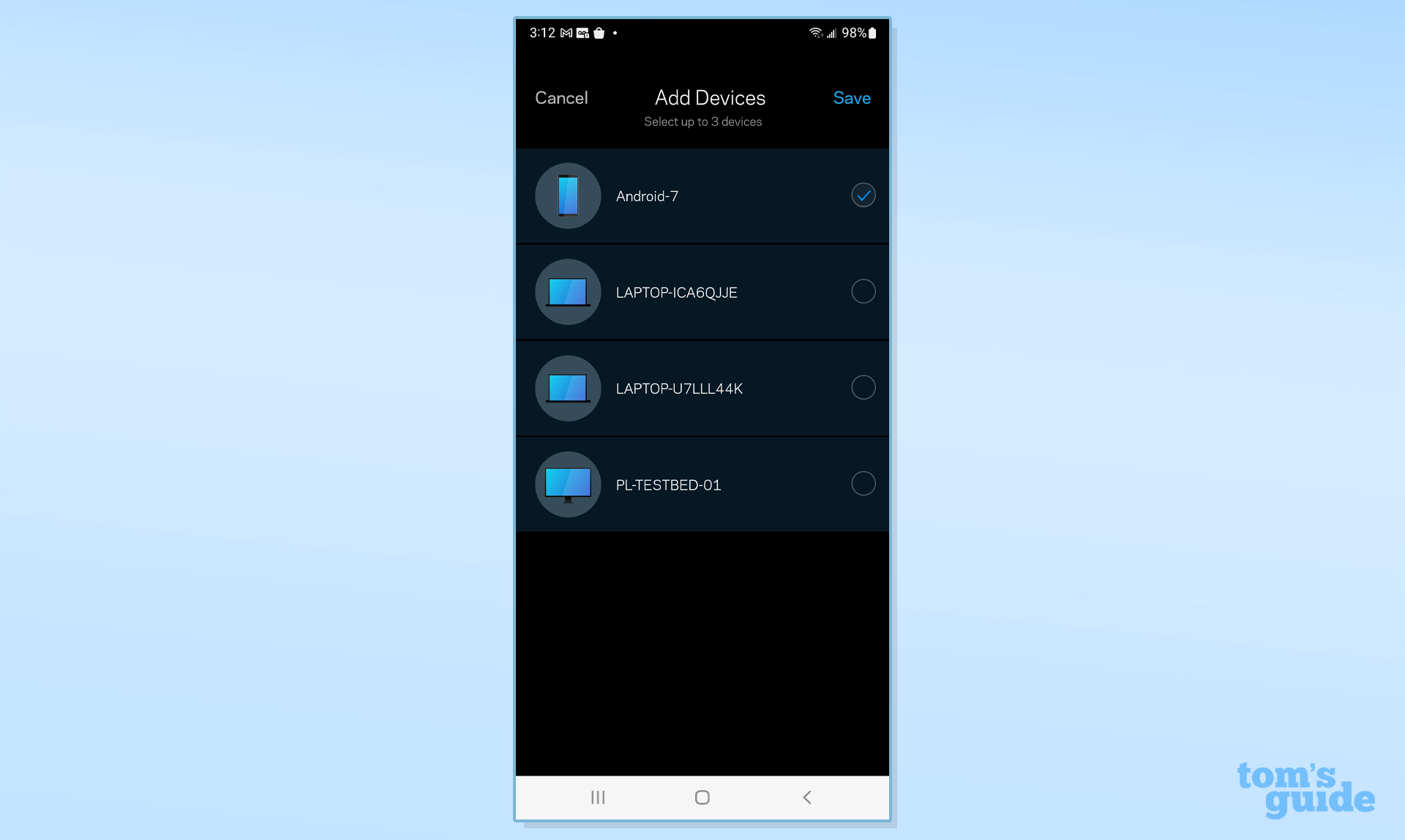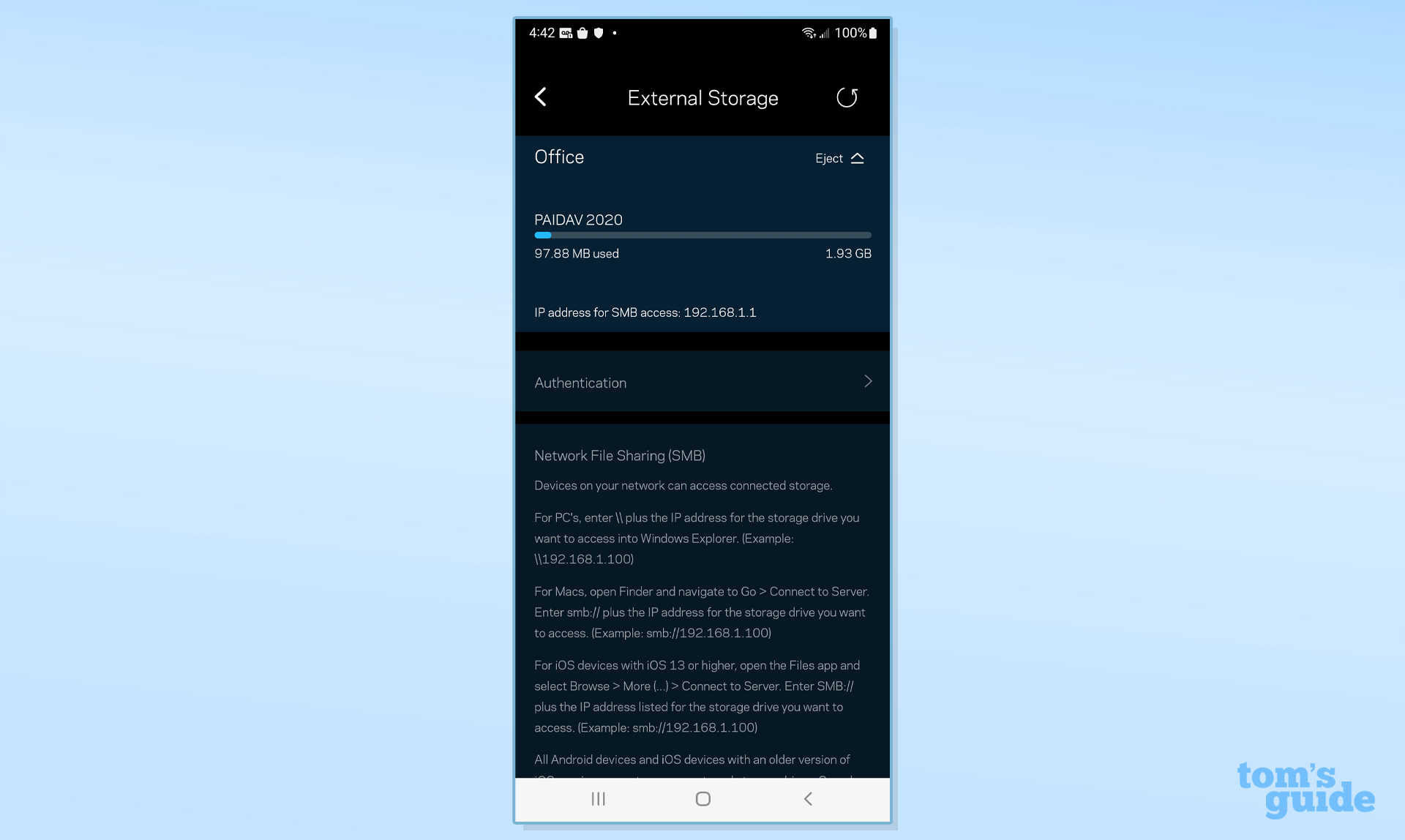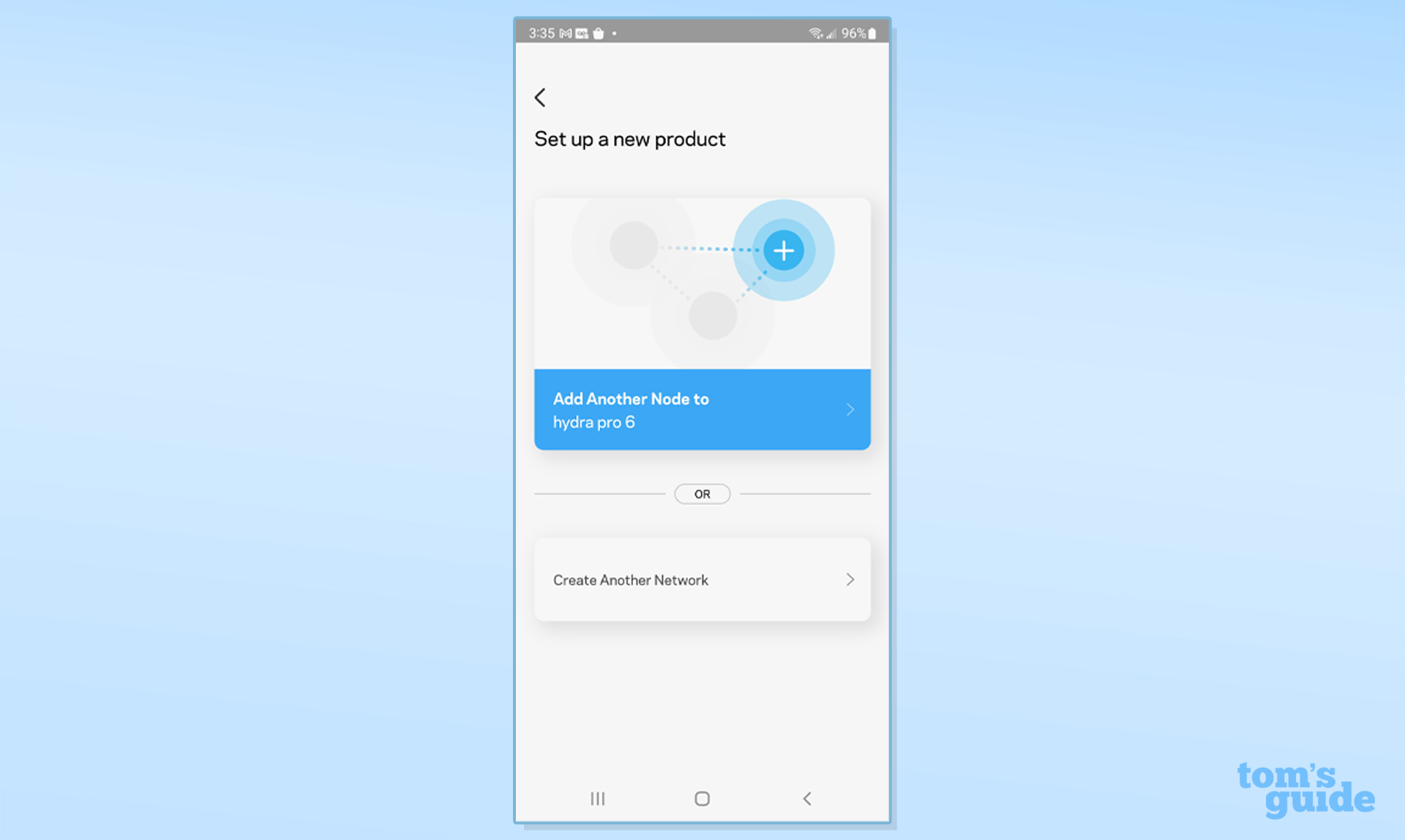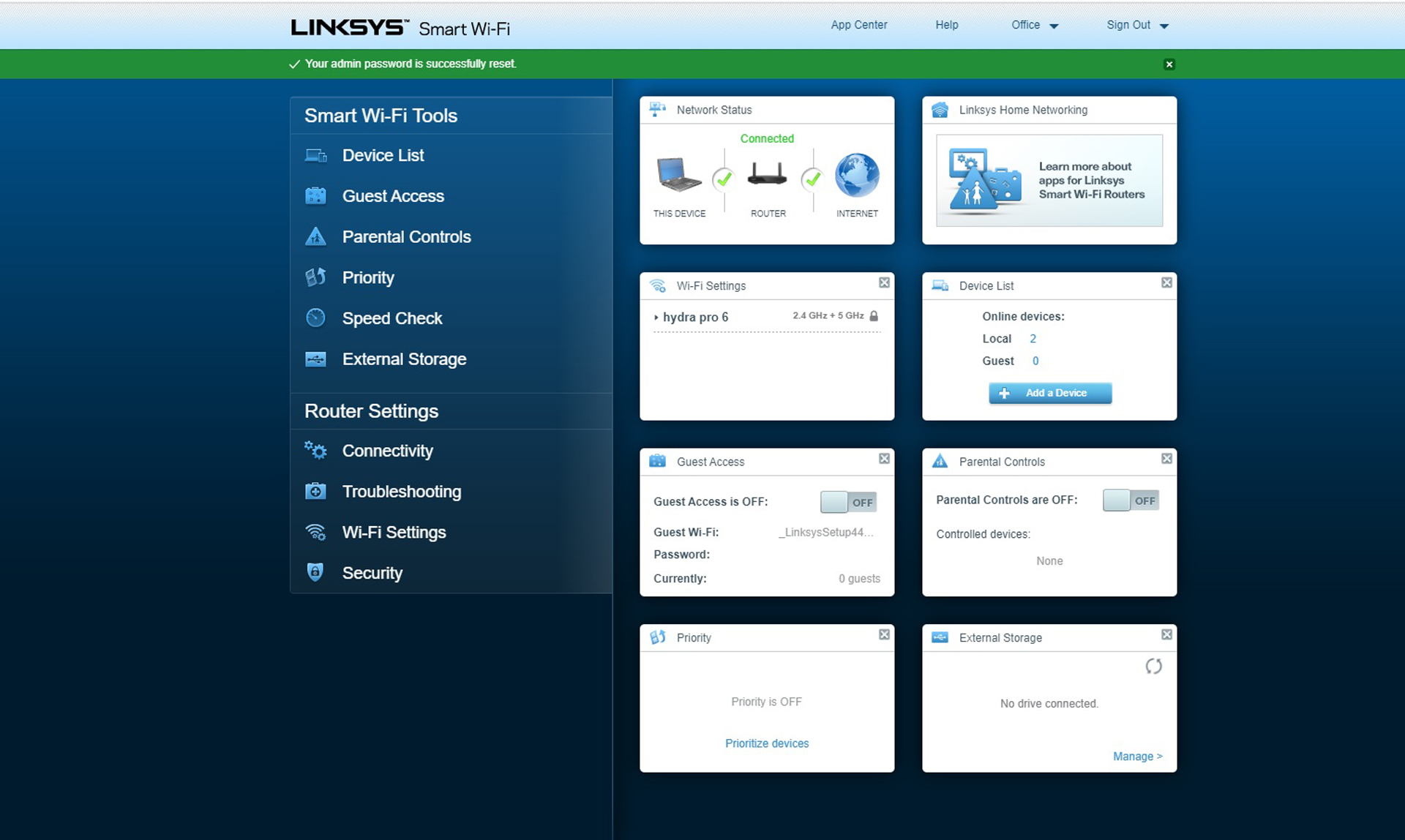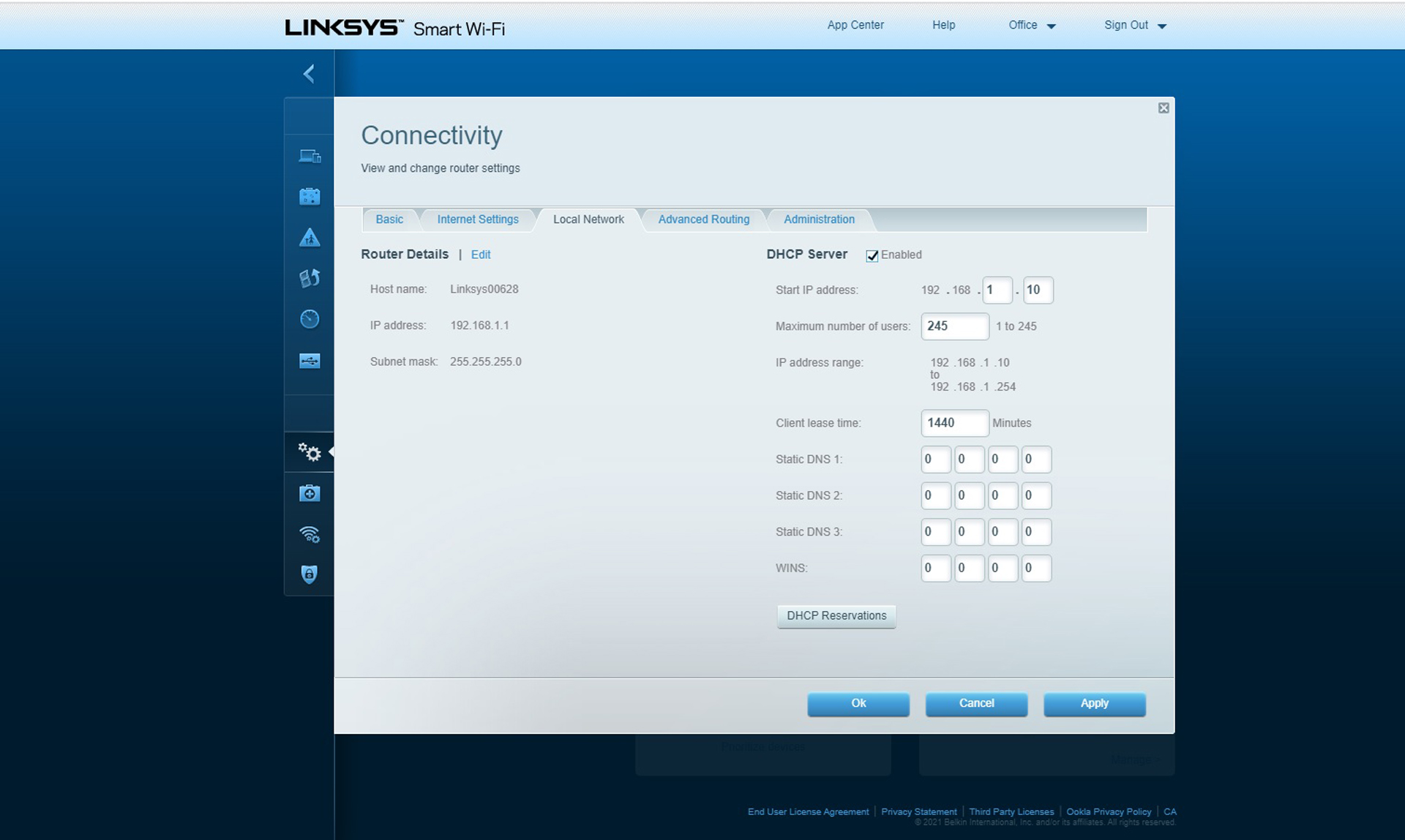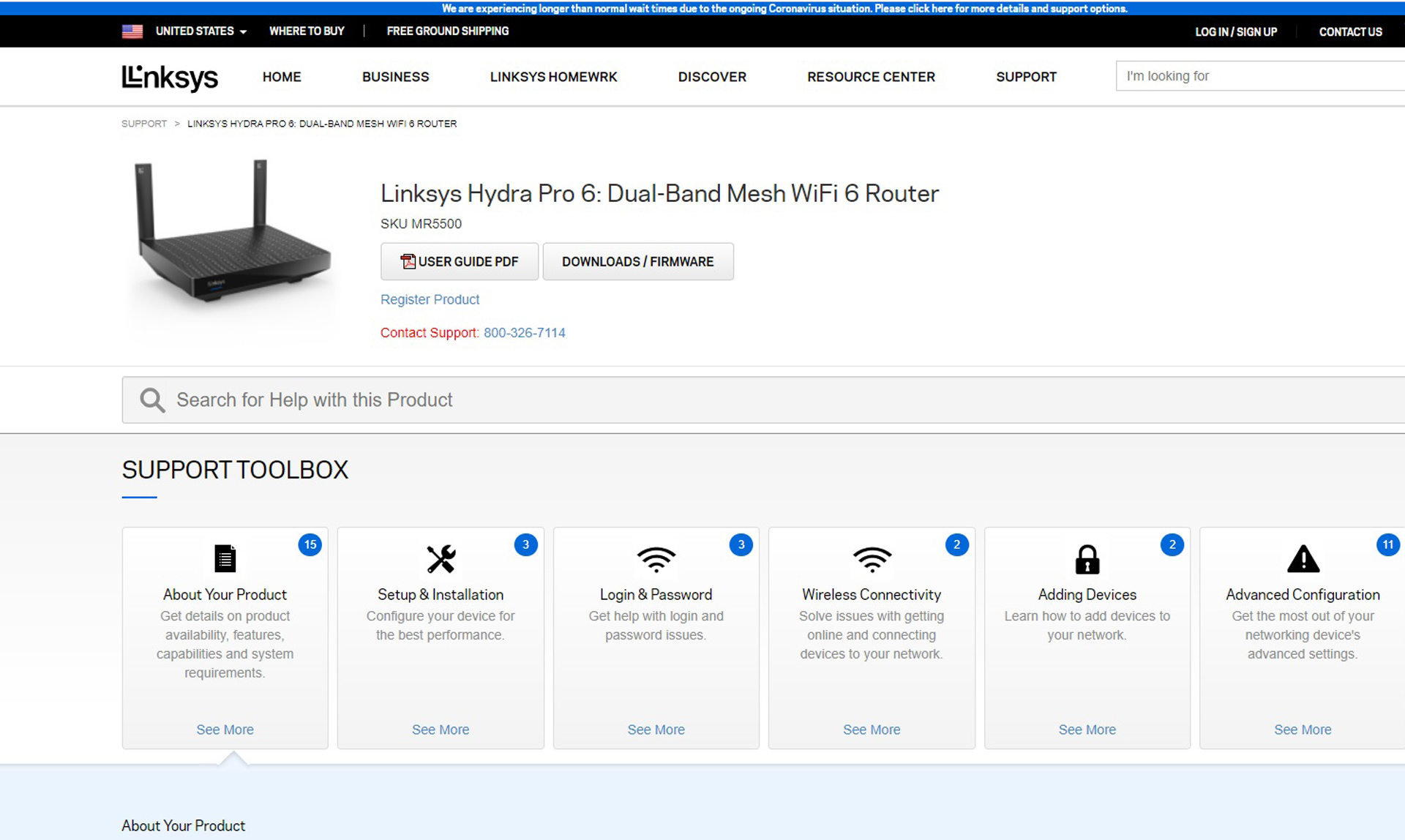Tom's Guide Verdict
While it lacks many of the creature comforts of a high-performance or gaming router, the Linksys Hydra Pro 6 comes close with access to 160MHz data channels and several customization choices. It may not have multi-gig inputs and an extra layer of security, but it’s a mainstream router through and through that should fit right into most homes. Too bad it costs as much as a high-end router that provides more options and higher data speeds.
Pros
- +
Small and easy to set up
- +
Good customization options
- +
Wide 160MHz data channels available
- +
Good range and throughput at distance
Cons
- -
Expensive
- -
No extra security software
- -
Uses 1Gbps wired input and outputs
Why you can trust Tom's Guide
Wi-Fi Spec: AX5400
Number of Antennas/Removable: 3/No
Ports: 1 WAN/4 LAN gigabit per second, USB 3
Processor/Memory/Storage: dual-core 1.0GHz/512MB/256MB
Wi-Fi chip: Qualcomm Immersive Home 216
Performance: 840.6Mbps (at 15 feet)
Range: 95-feet
Size: 8.5 x 6.1 x 2.2 inches
Estimated Annual Electricity Cost: $15.90
It may not be the fastest or most secure router available, but the Linksys Hydra Pro 6 is small and easy to set up. Based on Wi-Fi 6, the router has just enough customization options to meet your family’s digital needs. Plus, it can tap into an ultra-wide 160MHz data channel for data hungry users and become the center of a mesh network.
Despite reasonable throughput and good range, the router lacks high-end accouterments like multi-gig inputs, port aggregation and any extra security software. Among the most expensive routers in its class, many competing devices provide more performance for less. Our Linksys Hydra Pro 6 review will help you decide if this is one of the best Wi-Fi routers and the right choice for your home.
Linksys Hydra Pro 6 review: Pricing and availability
Available at the beginning of 2022, the Linksys Hydra Pro 6 sells for $300, that’s $50 less than the more powerful Hydra Pro 6E. Others in this class include the less expensive Asus RT-AX86U ($250) and Netgear Nighthawk RAX50 ($250).
Linksys Hydra Pro 6 review: Design
Aimed at those who want a modest unobtrusive router to fill their homes with Wi-Fi, the Linksys Hydro Pro 6 (aka MR5500) is a small Wi-Fi wonder. At 8.5 x 6.1 x 2.2 inches, it’s the same size as the Linksys MR7350, but the Hydra Pro 6 is one-third the size of the high-performance Netgear Nighthawk RAX50.
The Hydra Pro 6’s pair of antennas add 4.1-inches to the router’s height when extended but it’s easy to set up on a desk, shelf or kitchen countertop. Its black case has soft rubber feet, cut-outs underneath for wall mounting and perforations across the top for cooling. Even during heavy use, it never got above 106 degrees Fahrenheit.

Unlike the light show that the Asus RT-AX86U puts on with its 10 LEDs, the
Hydra Pro 6’s single LED bar discreetly shows its status. Purple means it’s ready to be configured while blue means it’s online. If it turns red, the router is offline.
Get instant access to breaking news, the hottest reviews, great deals and helpful tips.
Instead of loading the router with more and more antennas, the Hydra Pro 6 has an internal patch antenna and two external masts; each has a 2.4- and a 5GHz antenna inside. They can be moved to grab a weak signal but are not removable. In other words, it’s a welcome change from the likes of the octo-antenna TP-Link Archer AX11000.
Built around Qualcomm’s Immersive Home 216 Wi-Fi platform, the Hydra Pro 6 is a dual band 802.11AX router that mixes elements of high-performance and mainstream routers. Able to tap into six spatial data streams, it can use a single 160MHz high-performance data channel for data hogs. It uses MU-MIMO technology to service a lot of devices and advanced beamforming to tailor the transmissions to the receiving system.
The Hydra Pro 6 has a 1GHz dual-core processor, 512MB of RAM and room for up to 256MB of firmware and settings. Able to move 574Mbps over its 2.4GHz band as well as 4,804Mbps over its 5GHz link, it carries an impressive AX5400 rating.
It’s good to go with wired networking connections along the back, including a broadband WAN input and four wired outputs; all are limited to 1Gbps though. By contrast, the Asus RT-AX86U has a faster 2.5Gbps input. Plus, unlike the Nighthawk RAX50, none of the downstream ports can be combined using port aggregation.
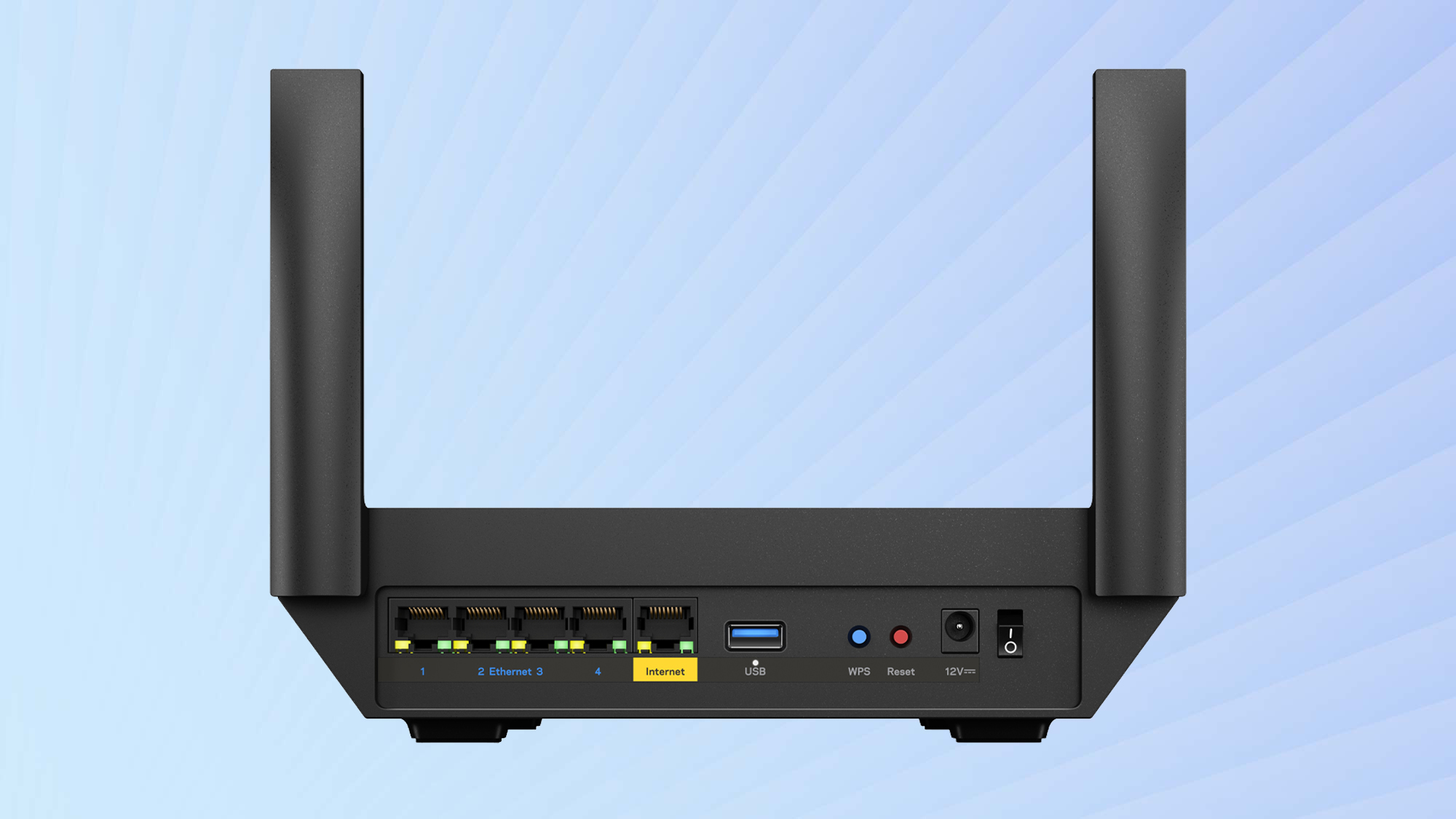
With a USB 3.0 port, the Hydra Pro 6 can connect to a flash drive for access across the network. Happily, its contents can be password protected. In addition to a power port for use with the included AC adapter, the Hydra Pro 6 has an on/off switch and buttons for resetting the device and starting the Wireless Protected Setup (WPS) to quickly add devices.
Like other Wi-Fi 6 routers, the Hydra Pro 6 has a guest network and can use WPA3 encryption. However, it falls short by lacking extra security software, like Netgear’s Armor, to keep hackers and identity thieves out of your network.
There’s one more trick up the Hydra Pro 6’s sleeve. In addition to being a traditional router, it can be used to create a mesh system for larger houses. In other words, it can be the host router for connecting Velop satellites in a mesh network.
Linksys Hydra Pro 6 review: Performance
Based on a couple weeks of daily use and performance testing with IxChariot’s network simulation benchmark in my 3,500-square-foot home, the Linksys Hydra Pro 6 was reliable but left several dead spots. Adding a mesh node or two probably would have helped.
With our test system 15-feet from the Hydra Pro 6, it delivered a throughput of 840.6Mbps. That’s about 40 percent off the Netgear Nighthawk RAX50’s pace of 1.38Gbps and second best compared to the TP-Link AX6000’s 888.2Mbps and the Asus RT-AX86U’s 929.7Mbps under the same conditions.
At 50-feet, the Hydra Pro 6’s throughput dropped to 329.4Mbps but was good enough to beat both the Nighthawk RAX50 (at 133.2Mbps) and the RT-AX86U (at 285.3Mbps). On the other hand, the TP-Link AX6000 led the way at this distance with 396.7Mbps of bandwidth available.
| Row 0 - Cell 0 | Linksys Hydra Pro 6 | Netgear Nighthawk RAX50 | Asus RT-AX86U |
| 15 feet | 840.6Mbps | 1.38Gbps | 929.7Mbps |
| 50 feet | 329.4Mbps | 133.2Mbps | 285.3Mbps |
| 75 feet | 123.1Mbps | 9.8Mbps | 250.1Mbps |
| 90 feet | 44.3Mbps | --- | 7.4Mbps |
When we moved the receiving station to 75-feet, the Hydra Pro 6’s throughput fell to 123.1Mbps. That’s well ahead of the Nighthawk RAX50’s trickle of 9.8Mbps but behind the RT-AX86U’s 250.1Mbps.
With 90 feet separating the router and receiving system, the Hydra Pro 6 was the long-distance champ. It delivered a strong 44.3Mbps. At the same distance, the RAX50 was offline and the RT-AX86U yielded just 7.4Mbps. The Hydra Pro 6 had a range of 95-feet, putting it on a par with the RT-AX86U but slightly behind the Netgear Nighthawk XR1000’s 100-feet.
The Hydra Pro 6 supplied 814.7Mbps across a 25-foot room and through a wall to the receiving system. This is 14 percent more data than the RT-AX86U’s 698.5Mbps was capable of delivering but not as good as the Nighthawk RAX80’s 1.07Gbps. Finally, the Hydra Pro 6 was able to move 586.9Mbps up a floor to a room above the router. This is slightly less data flow compared to the RT-AX86U’s ability to push 615.7Mbps to a floor above.
Overall, this is a router that should do just as well in a vertical townhouse as a long ranch home. It may not be the fastest around but the sweet spot for its data-moving abilities point to those with broadband connections rated at 400Mbps or less.
During two weeks of daily use, the Hydra Pro 6 acquitted itself well and was reliable. It passed the saturation test, where I watched videos on an HP EliteBook Dragonfly and a ThinkPad T470 while listening to an internet radio station on a Samsung Galaxy Tab S7+ and my Macbook Air moved data to and from a networked RAID storage unit. All the audio and video came through perfectly with no glitches, freezes or drop-outs.
While it was moving data back and forth, the Hydra Pro 6 used a maximum of 13.0 watts of power. That’s more than the 10.3-watts the Asus RT-AX86U consumed. If it’s left on 24/7, the Hydra Pro 6 should cost about $15.90 per year to use, assuming you pay the national average of 14 cents per kilowatt-hour of electricity.
Linksys Hydra Pro 6 review: Setup
Installing the Hydra Pro 6 router can be accomplished either with the Linksys app or using a connected browser. There are versions of the app for iOS as well as for Android. After creating a Linksys account, the router checked my internet connection and I needed to give the network a name and password.
All told, it took 6 minutes and 30 seconds to set it up and it delivered the full 200Mbps from my broadband connection on the first try. At the end, the app asked if I wanted to create a mesh system with other Linksys gear.
Linksys Hydra Pro 6 review: Configuration
Like setting up the Hydra Pro 6, configuring it can be done with the app or a connected browser. The former is simple and visual, while there are more options available with the latter.
The app only runs in portrait mode and the Dashboard uses the black and blue color scheme of the Linksys Smart Wi-Fi software. In addition to showing that it’s online, the screen displays how many devices are connected and has a link to the Wi-Fi settings. There are also places for turning on the guest network and setting up the Parental Controls.
The Advanced Wi-Fi Settings section’s Channel Finder can optimize the data flow by sending it over the least congested channels; it takes a couple of minutes to analyze the network and suggest changes. There’s a place to turn Dynamic Frequency Selection (DFS) on, which is key to using the Hydra Pro 6’s 160MHz channel.
By tapping on the three-line hamburger menu in the upper left, I was able to dig a little deeper. I not only ran a Speed Check of the device’s connection but prioritized my system as well.
Later, I inserted a usb flash drive into the Hydra Pro 6’s USB port. It was quickly recognized, and it can be set to require authentication for access to the drive’s contents across the network.
The last piece of the Hydra Pro 6’s puzzle is converting it to a mesh router. To make it work, plug in a Velop mesh node nearby and run the setup procedure in the app. There’s no way to do it with a connected browser though.
That said, the connected browser’s Dashboard screen is more detailed with a list of online devices for the main and guest LANs as well as a switch for the Parental Controls. There’s a list of the prioritized systems and it shows if a USB drive is connected.
That’s just scratching the surface as the list of topics on the left includes several customization options. For instance, the Local Network section not only let me set up DHCP or static IP addressing but what starting address to use. It was also easy to change the length of the DHCP lease.
The Advanced portion of the Wi-Fi Settings has lots of options, including using Airtime Fairness to avoid network congestion. For those who set the Hydra Pro 6 up in a mesh network, the router’s Node and Client Steering can be tuned to push the device’s connections to the part of the network with the most available bandwidth.
Meanwhile, the router allows adjusting the Maximum Transmission Unit (MTU) or largest data packet allowed. It stops there with the Hydra Pro 6 not being able to change several optimization parameters, like RTS threshold and beacon interval. The RT-AX86U and others provide this flexibility.
The Hydra Pro 6’s one-year warranty is standard in the business, but half as good as the two years of coverage that Asus provides. Linksys provides lifetime support, which is much better than Netgear’s policy of charging after 90 days.
On top of a variety of videos and downloads, the Linksys support site has setup help, troubleshooting and some very advanced configuration advice.
Linksys Hydra Pro 6: Verdict
Aimed at homes that may not need the performance of a high-end router, the Linksys Hydra Pro 6 can satisfy most families with reliable data. It should do fine in a mid-sized house and is quick to set up with several customization options. It offers a few luxuries, like an ultra-wide 160MHz data channel and the ability to use it in a mesh network with Linksys Velop nodes.
It may not be the fastest router around, but it was reliable and had good range and throughput at long distances. It lacks a multi-gig input, or any extra security software yet is priced like higher performing routers, like the Asus RT-AX86U and Netgear Nighthawk RAX50 – which move more data. Still, it’s worth a look for digital households that stick to email, downloads and watching the occasional 4K movie.
Brian Nadel is a freelance writer and editor who specializes in technology reporting and reviewing. He works out of the suburban New York City area and has covered topics from nuclear power plants and Wi-Fi routers to cars and tablets. The former editor-in-chief of Mobile Computing and Communications, Nadel is the recipient of the TransPacific Writing Award.
